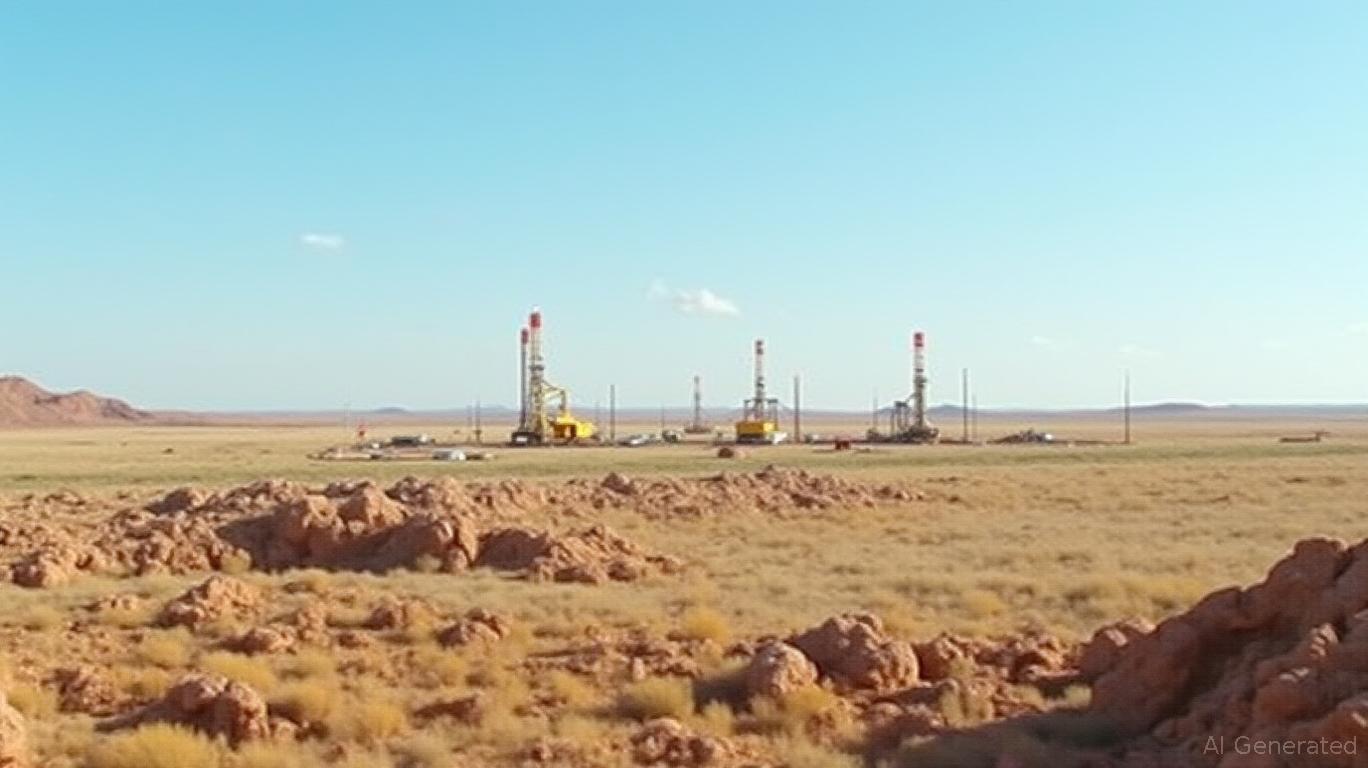Civitas Resources: Navigating Oil Volatility with Deleveraging and Permian Growth
Amid relentless oil price swings and the push for ESG compliance, energy companies like
(NYSE: CIVI) face a precarious balancing act: deleveraging while capitalizing on high-margin assets. For CIVI, the stakes are high. With a net debt target of $4.5 billion by year-end 2025 and a $300 million asset sales plan, the company's ability to manage financial discipline while exploiting its Permian Basin growth engine could determine its survival in this volatile landscape.Deleveraging Progress and Financial Flexibility
Civitas' priority is clear: reduce leverage and strengthen liquidity. As of Q1 2025, net debt stood at $5.1 billion, down from $5.9 billion in late 2024, with a goal to reach $4.5 billion by year-end. This reduction is achievable at $60/WTI oil prices, a price point the company considers “conservative” given its hedging strategy.
The company's financial flexibility is bolstered by a $2.5 billion revolving credit facility, providing $1.5 billion in liquidity. This liquidity cushion, combined with a $100 million cost optimization plan—projected to deliver $40 million in 2025 savings—creates a runway to weather potential price dips. Notably, 50% of 2025 oil production is hedged at an average floor of $68/barrel, shielding cash flows from volatility.
Permian Basin: The Growth Engine
Civitas' Delaware Basin operations are its crown jewel. Q1 2025 Permian production hit 164 MBoe/d, with Delaware drilling accounting for 42% of activity. Cycle times improved by 10%, and Midland completions rose 5% sequentially due to Simulfrac efficiencies. Management forecasts 5% Permian oil growth in Q2, driven by new well productivity.

The Permian's scale and efficiency are critical to free cash flow. Q1 Adjusted EBITDAX of $786 million and free cash flow of $171 million underscore the basin's profitability. However, Permian cash costs rose due to third-party water takeaway issues—a temporary headwind now mitigated through alternative logistics.
DJ Basin Challenges and Cost Optimization
The DJ Basin, while stable at 164 MBoe/d, faces cost pressures. Elevated Q1 cash operating costs stemmed from weather disruptions and supply chain bottlenecks. The silver lining? A new oil gathering agreement in the DJ is projected to save $15 million annually, and 100% local sand use in completions reduced costs by $80,000 per well.
Yet, the DJ's mature asset status means production here is unlikely to grow meaningfully. Civitas' focus is on squeezing efficiencies and monetizing non-core assets to fund Permian expansion.
Asset Sales: Navigating a Volatile Market
Civitas' $300 million asset sales target remains on track despite delayed deals in early 2025. Management emphasized patience in avoiding undervalued sales, a prudent stance given current low oil prices. The proceeds will directly reduce debt, easing leverage ratios.
While competitors rush to divest in a buyer's market, Civitas' selective approach could pay off. The company's Midland Basin acquisition in early 2025—now contributing to Permian growth—demonstrates its disciplined capital allocation.
Valuation: A Compelling Risk-Reward Proposition?
Civitas trades at a P/E of 4.16 and an EV/EBITDA of 1.95—deep discounts by historical standards. This compression reflects market skepticism about oil prices and leverage. However, the stock's 62% year-to-date decline has created a contrarian opportunity.
The company's dividend of $2/share annually and share repurchases (reducing outstanding shares by 2% in Q1) signal confidence. Once debt hits $4.5 billion, excess cash flow could fuel larger buybacks or dividend hikes, rewarding long-term holders.
The Bottom Line: A Risk-Adjusted Buy
Civitas Resources is a bet on two certainties: Permian dominance and disciplined deleveraging. The Permian's scale and cost efficiencies position it to thrive at $60+/barrel, while hedging and asset sales buffer against downside.
The risks—high leverage, DJ Basin stagnation, and regulatory scrutiny—are real but manageable. At current valuations, the stock offers a compelling entry point for investors willing to stomach short-term volatility. Civitas' focus on returning capital, cutting costs, and prioritizing its Permian core makes it a standout in an energy sector rife with uncertainty.
Investment Thesis: Buy CIVI for its Permian growth, disciplined balance sheet strategy, and undervalued stock. Monitor oil prices and asset sales execution closely—both could unlock shareholder value in 2025.

Comments
No comments yet